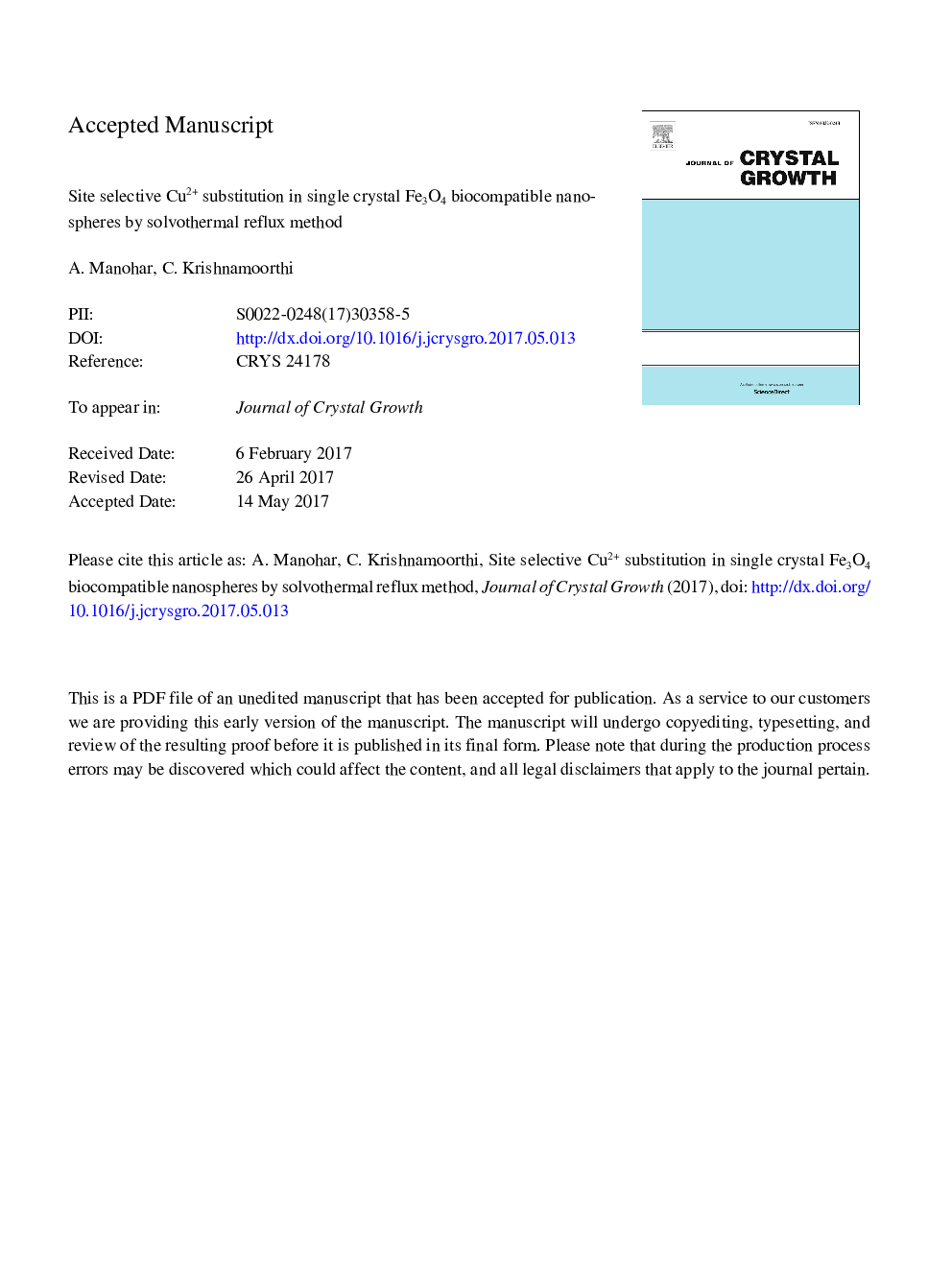| Article ID | Journal | Published Year | Pages | File Type |
|---|---|---|---|---|
| 5489116 | Journal of Crystal Growth | 2017 | 24 Pages |
Abstract
Transition metal cations distribution among tetrahedral and octahedral sites in Fe3O4 has profound influence on it properties. The cations distribution among these sites were influenced by crystal field stabilization energy (CFSE) of a substituent ion. It was reported that Cu2+ substitutes both Fe3+ in tetrahedral and Fe2+ in octahedral sites of magnetite though it has high CFSE for octahedral sites. Thus it promotes mixed (normal & inverse) spinel structure and hence the properties deviate from the prediction. Here we show that selective octahedral site substitution of Fe2+ by Cu2+ in single crystal Fe3O4 nanoparticles was possible by solvothermal reflux method at moderate temperatures (â300 °C). It was attributed to reduced energy barrier for crystallization and high diffusion coefficient of the metal cations at moderate temperature in low viscous organic solvents mixture, at ambient pressure, compared to coprecipitation and solid state reaction protocols. In addition, effective removal of exothermic crystal lattice energy, released during nucleation and growth process, by natural gas bubbles formed in the reflux organic solvent mixture. This promotes effective diffusion of cations during the growth process and easy octahedral occupation by Cu2+ in Fe1âxCuxFe2O4 (x = 0, 0.1, 0.2, 0.3, 0.4, 0.5 & 0.6) single crystal nanospheres. The octahedral substitution was confirmed by reduction of crystal lattice parameter as well as ferromagnetic strength of octahedral sublattice with enhanced Cu2+ concentration. In addition, morphology, lattice vibrational frequency and electron excitation spectra of the nanospheres were studied. The Langevin function fit analysis reveals that superparamagnetic domain diameter were slightly less than the particle diameter obtained from TEM micrograph.
Related Topics
Physical Sciences and Engineering
Physics and Astronomy
Condensed Matter Physics
Authors
A. Manohar, C. Krishnamoorthi,
